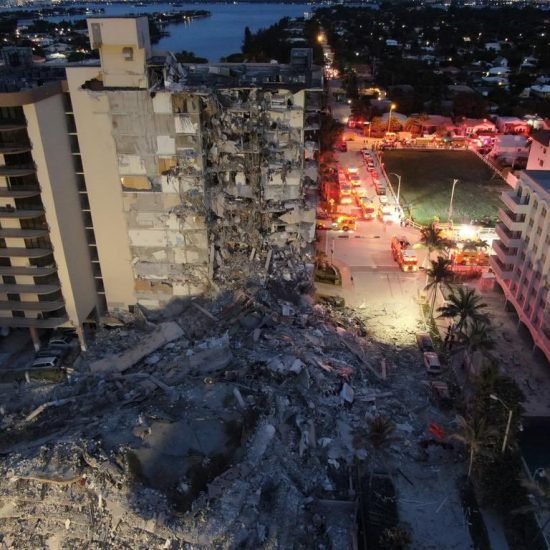
HOA Detective™ – April 11, 2025: For almost two decades, the HOA Detective™ has questioned the mathematical integrity of the reserve study methodology endorsed by the Community Associations Institute (CAI), which is known as the “percent funded” level. More formally called “Percent of Fully Funded” (PFF). While many in the industry treat the CAI standards as gospel, few understand the deep flaws that underlie the way “Percent Funded” is calculated and interpreted. Even among so-called experts, the fundamental math is rarely understood, let alone questioned. This post examines why the CAI framework, especially when applied to pooled reserve funds, is not just flawed, but dangerously misleading.
What “Percent Funded” is Supposed to Represent: According to the CAI Reserve Study Standards (2023), “Percent Funded” is defined as:
“The ratio, at a particular point in time, of the actual (or projected) reserve balance to the fully funded balance, expressed as a percentage.”
In turn, the “Fully Funded Balance” (FFB) is calculated for each reserve component based on the fraction of its useful life that has been “used up” or depreciated, using the formula:
FFB = Replacement Cost x (Effective Age / Useful Life)
This calculation is performed for all components in the inventory. The total FFB for the Association’s reserve fund is the sum of these individual FFBs. The Percent Funded is then:
Percent Funded = Reserve Balance / Fully Funded Balance
Sounds neat and tidy. However, it collapses under scrutiny when the following critique is applied:
1. Linear Depreciation Is a Fiction: The FFB formula assumes that components degrade in a linear, predictable fashion. Real-world degradation is anything but linear. Roofs, boilers, paint, and asphalt often exhibit exponential or stepwise deterioration—requiring heavy repairs at the end of their useful life, not evenly throughout. Yet the CAI formula treats them like clockwork. In pooled accounting, where all components share one reserve fund, this leads to an immediate mismatch between the mathematical liability (FFB) and the cashflow reality of the Association.
2. Averaging Percent Funded Per Component: If the reserve software application averages the percent funded level of each component, rather than summing the dollar-based Fully Funded Balances and comparing that to the actual reserve fund balance,
The result can be wildly distorted metrics, especially when high-cost items like roofs or elevators skew the balance. If one component is 90% funded and another is 10%, the average is 50%, even if your actual cash position is woefully inadequate. Meanwhile, long-lived components that are not scheduled for replacement or major reserve spending for many years into the future, may not be allocated any reserves at all if the reserves are less than 100% funded.
3. You Can’t Backsolve the Liability: Let’s say all you have is the percent funded level and the projected year-end reserve spending liability. Can you backsolve the Fully Funded Balance? No, you can’t. That liability number is based on future expenditures, not on accumulated depreciation. Yet CAI methodology often conflates these ideas. This confusion trickles down into board decisions, budgeting, and funding plans—all based on math that doesn’t hold up.
4. Cash Flow Method Ignores Depreciation: The so-called “cash flow” or “pooled funding” method is often hailed for its flexibility and simplicity, but its most serious flaw is conceptual: it completely ignores real-world depreciation. Rather than accounting for the wear-and-tear or aging of assets, the cash flow method simply schedules funding based on anticipated future expenses, without regard to whether the Association is accruing sufficient reserves in proportion to the actual deterioration of its assets. This creates an illusion of adequacy, where the Association may appear to have a balanced funding plan, even while falling further behind on accumulating the capital necessary to offset true depreciation. Over time, this disconnect between the accumulation of reserves and the economic value of the components which is being lost due to depreciation, results in structural underfunding, masked by artificially stable graphs and projections.
What Should Reserve Planners Be Doing Instead: Reserve planning professionals need a reserve funding methodology that incorporates the following concepts in the strategy:
- Acknowledge the nonlinear nature of many reserve spending needs.
- Avoid clustered replacement cost estimates – no lump sum or spending allowances.
- Uses probabilistic models and actuarial science to calculate reserve spending liability.
- Separates short-term cashflow readiness from long-term capital adequacy.
- Treat the reserve fund as an insurance vehicle, not a savings account.
Let’s stop pretending that Percent Funded is a useful proxy for fiscal health. It’s a cosmetic metric based on flawed assumptions.
Final Thoughts: The real tragedy is not that the CAI method is flawed, but that so few are willing to challenge it. The HOA industry is founded on the illusion of certainty – that experts can model 30 years of future replacements with straight-line math and a pie chart.
They can’t. And until we admit that, we’re just drawing pretty graphs while communities fall further behind. If you’re a board member, reserve provider, or community manager who’s been uncomfortable with the math – you’re not crazy. You’re ahead of the curve.
It’s time to build a better model. One that reflects the real world, not 20th Century spreadsheet math.
Because You’re Buying More Than a Home!






